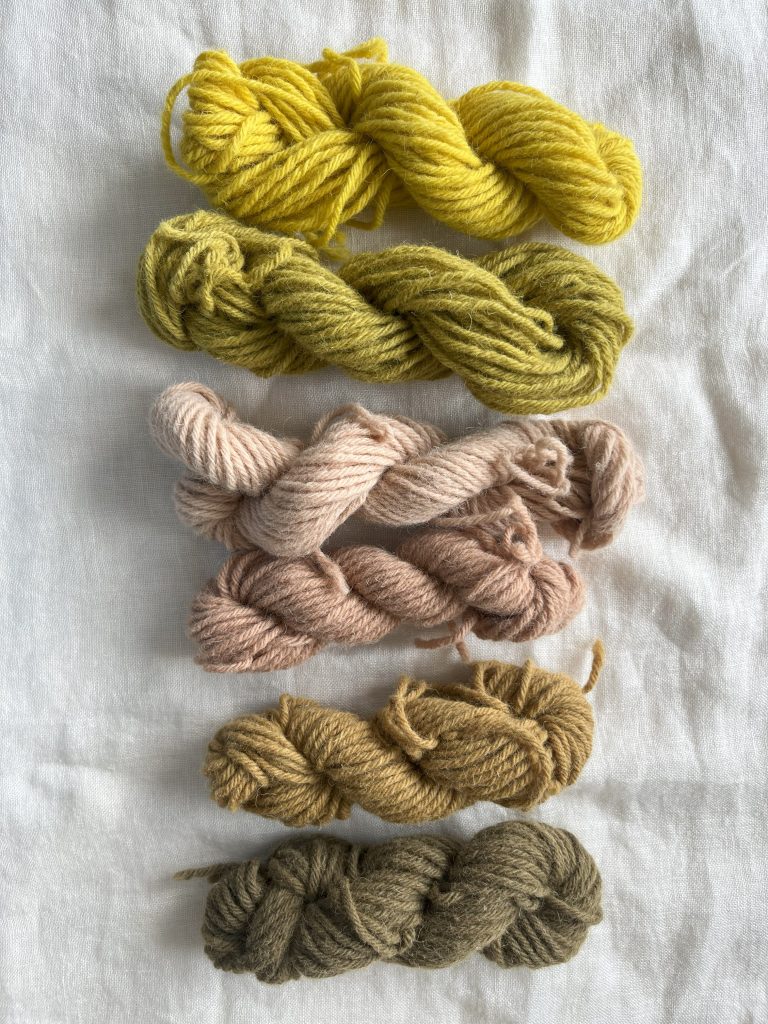Dye Wool With Foraged Plants
bring local colour into your knitting & crochet projects
Join me for a stroll…
You’ll discover the magic of transforming nature’s gifts into cosy, vibrant creations...
Gather a basketful of herbs, leaves or wild flowers – each one with unique colour potential waiting to be unlocked.
Infuse your yarn with your local, seasonal dyes. Then knit, crochet or weave these wild colours into your creations, capturing the essence of the natural world in every stitch.
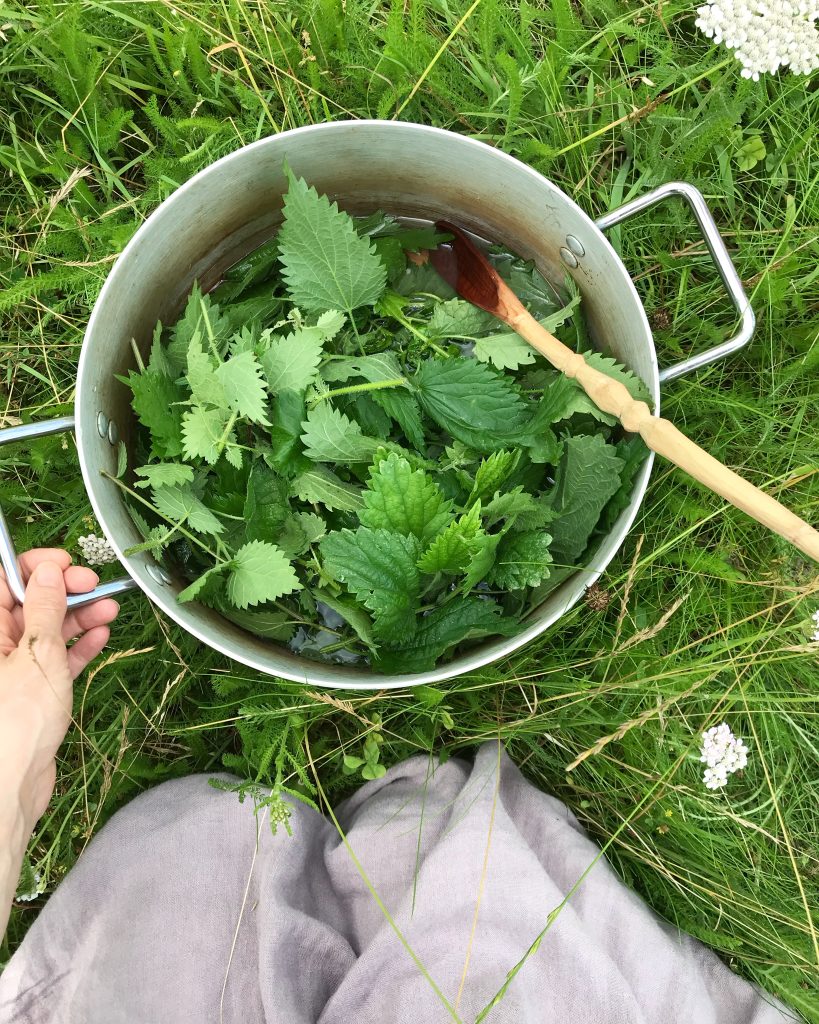
DO you yearn to –
If you nodded along to any of those, then I suspect you’ll like this...
Introducing...
Dye Wool With Foraged Plants
Dye wool yarn in a beautiful palette of local colours using leaves, flowers & tree cones that grow on your doorstep.
No matter where you live in the world, my tried and tested recipes will guide you to create vibrant, unique hues.
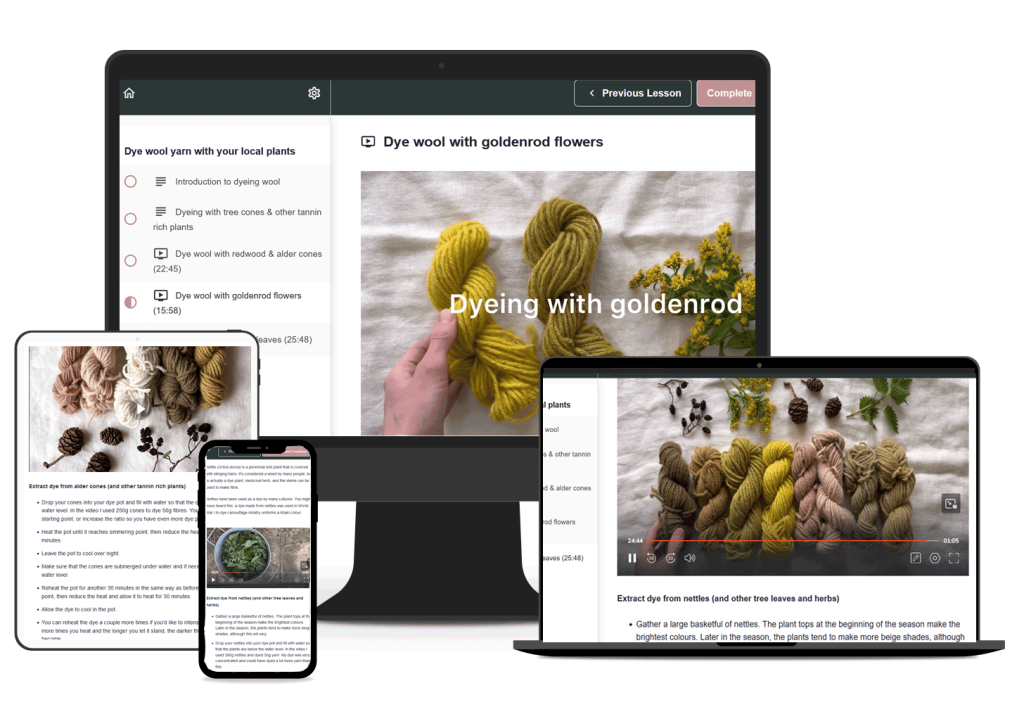
Lovely words from students about rebecca’s other dye courses...
“Rebecca’s step-by-step teaching is easy to follow, and I always enjoy learning something new from her.”
– DESIREE Bell
“Brilliant resource and lots of encouragement in the private community. Really glad I joined.”
– Lesley
Can you make a cup of tea?
Then you can dye with plants. It really doesn’t have to be much more complicated than that.
I have so many secrets to share with you, so you can avoid the overwhelm and get great results.
TELL ME MORE
Preview the course
What you’ll learn
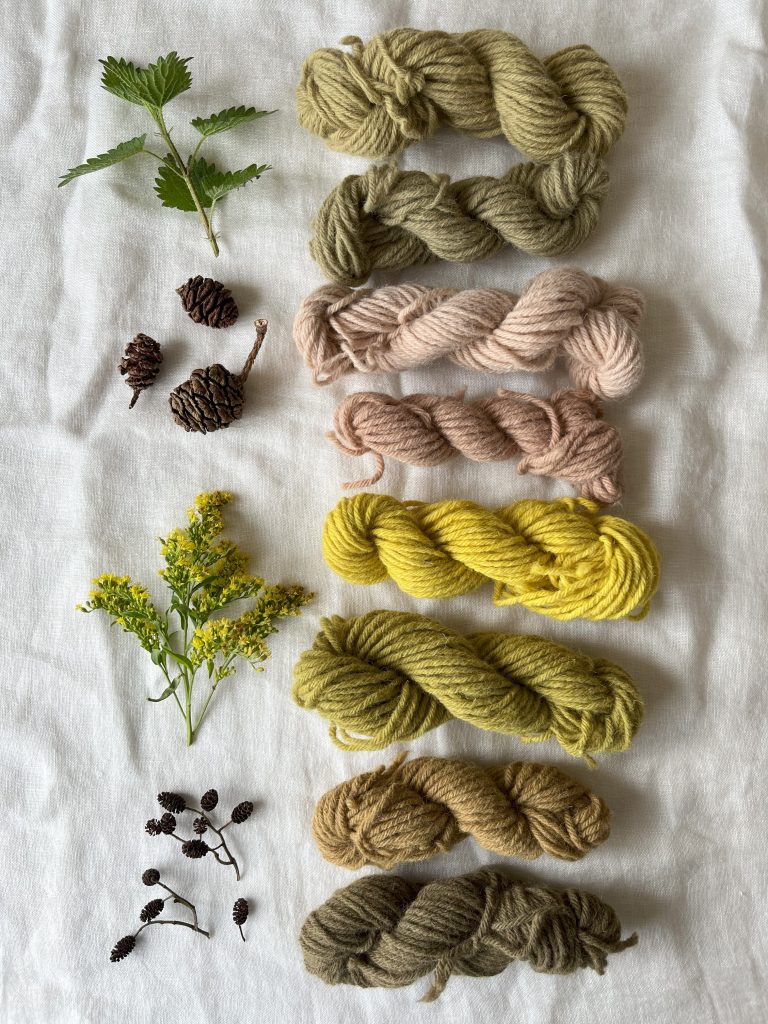
Dye wool with local plants
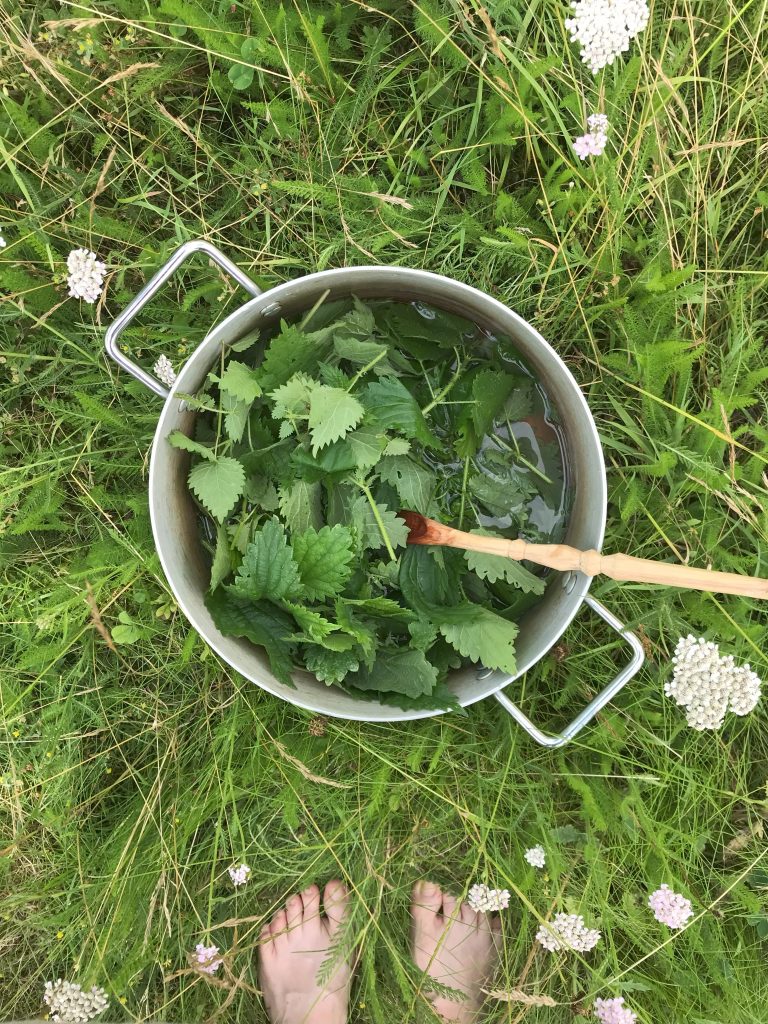
Dye with foraged leaves
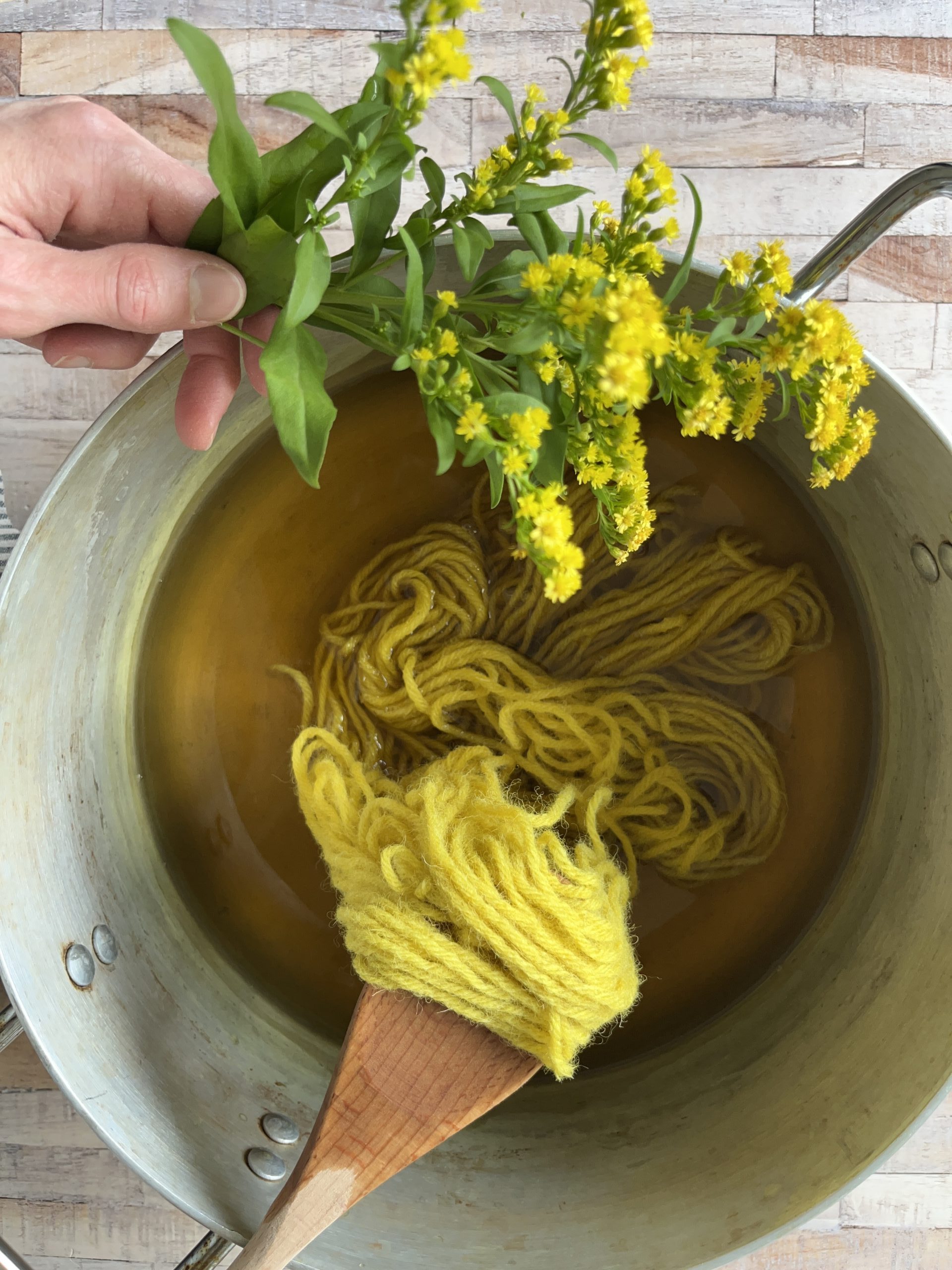
Dye with flowers
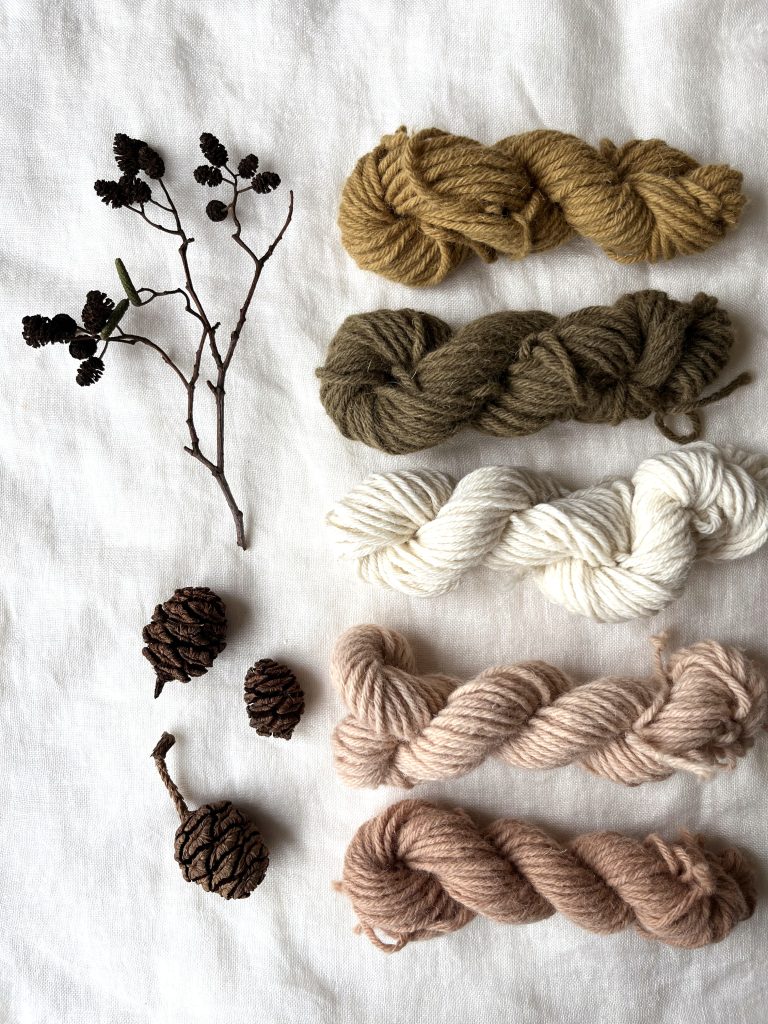
Dye with tree cones
Just imagine...
You gather a basketful of goldenrod or gorse flowers, then return home and make a pot of vibrant dye.
I’ll show you how to extract dyes from your local plants, so you can create colours through the seasons.
“Going to the woods is going home.”
– John Muir
Everything you need to know to confidently dye wool yarn with wild plants:
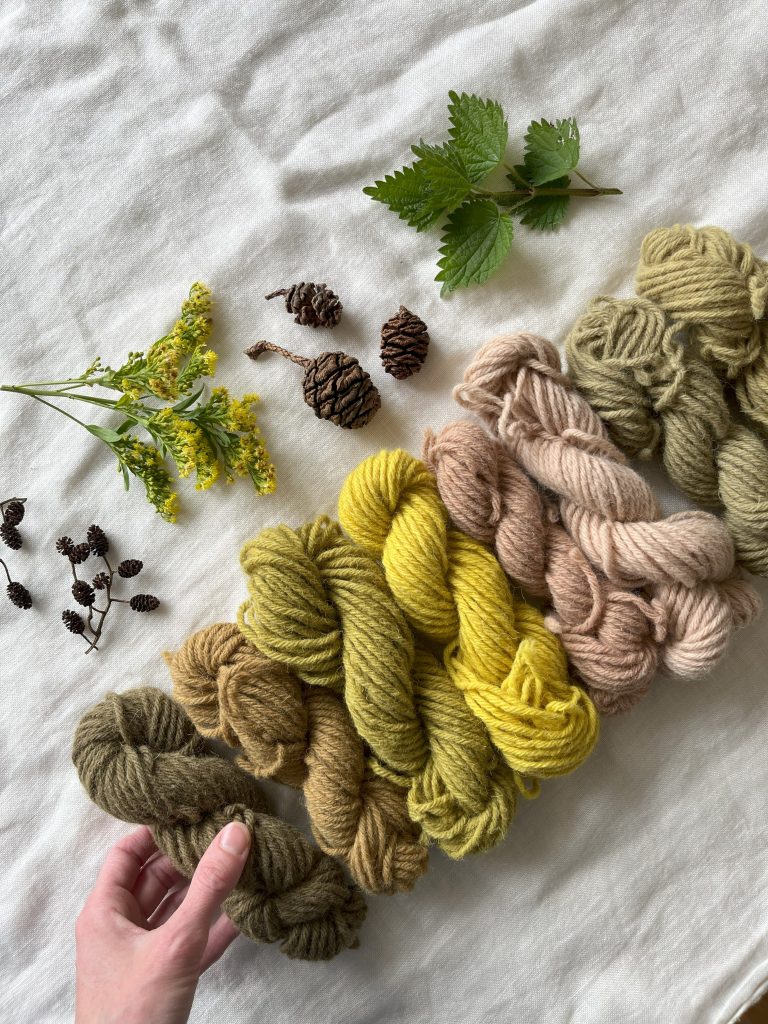
(re)connect with nature
Sourcing colour from your surroundings will help you see the world through new eyes...
Explore your local colour...
enrol today
£47
Meet your instructor
Hi, I’m Rebecca!
Over the last decade, I’ve taught thousands of people natural dyeing via my books and online courses.
Years ago, I started off dyeing with powdered dye extracts that I bought online. Although these were beautiful, I longed to feel more of a connection to my local environment.
Then, everything changed when I became a mother. I’d go on long walks with my baby and return with my pockets stuffed full of plants. Alder cones and dandelions were some of the first local dyes I tried.
Then, as my son got older, he would help me forage for plants too. Together, we learnt about the different trees and “weeds” growing around us. A lot of sweet memories were captured on cloth.
I realised that I didn’t need to spend money on dyes, as I had an array of beautiful dye plants right on my doorstep.
Ever since then, I’ve been on a journey of discovery in search of new colours from my local plants. There’s always something new to discover from nature.
Join me in my studio where I share my dyeing secrets and inspire you to unlock the colour from the plants around you.
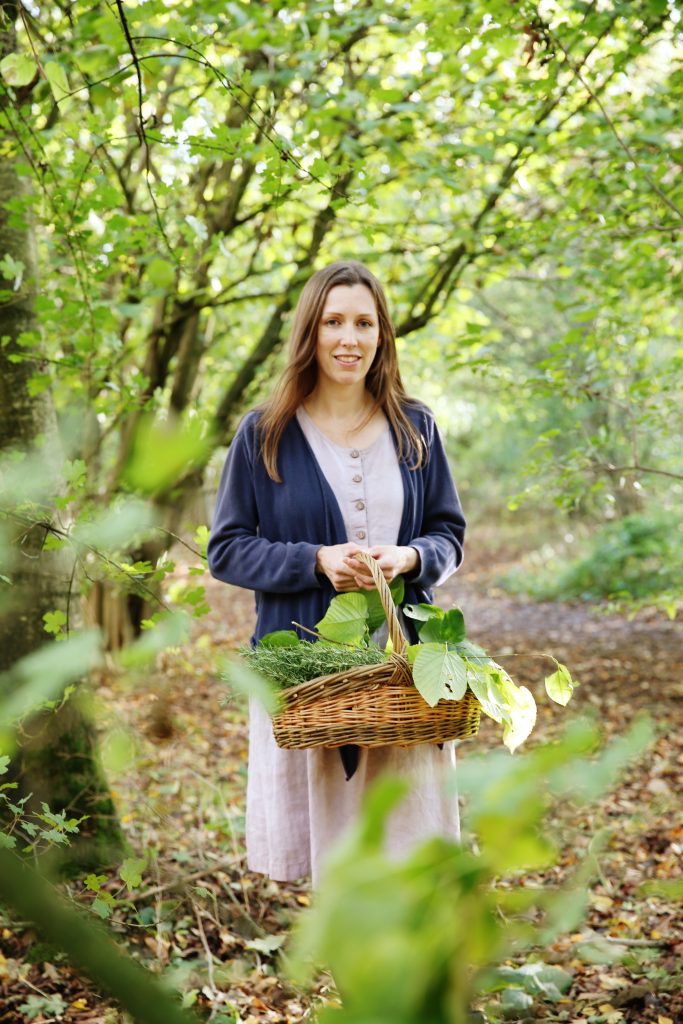
Enrol for £47, with lifetime access
Frequently Asked Questions
